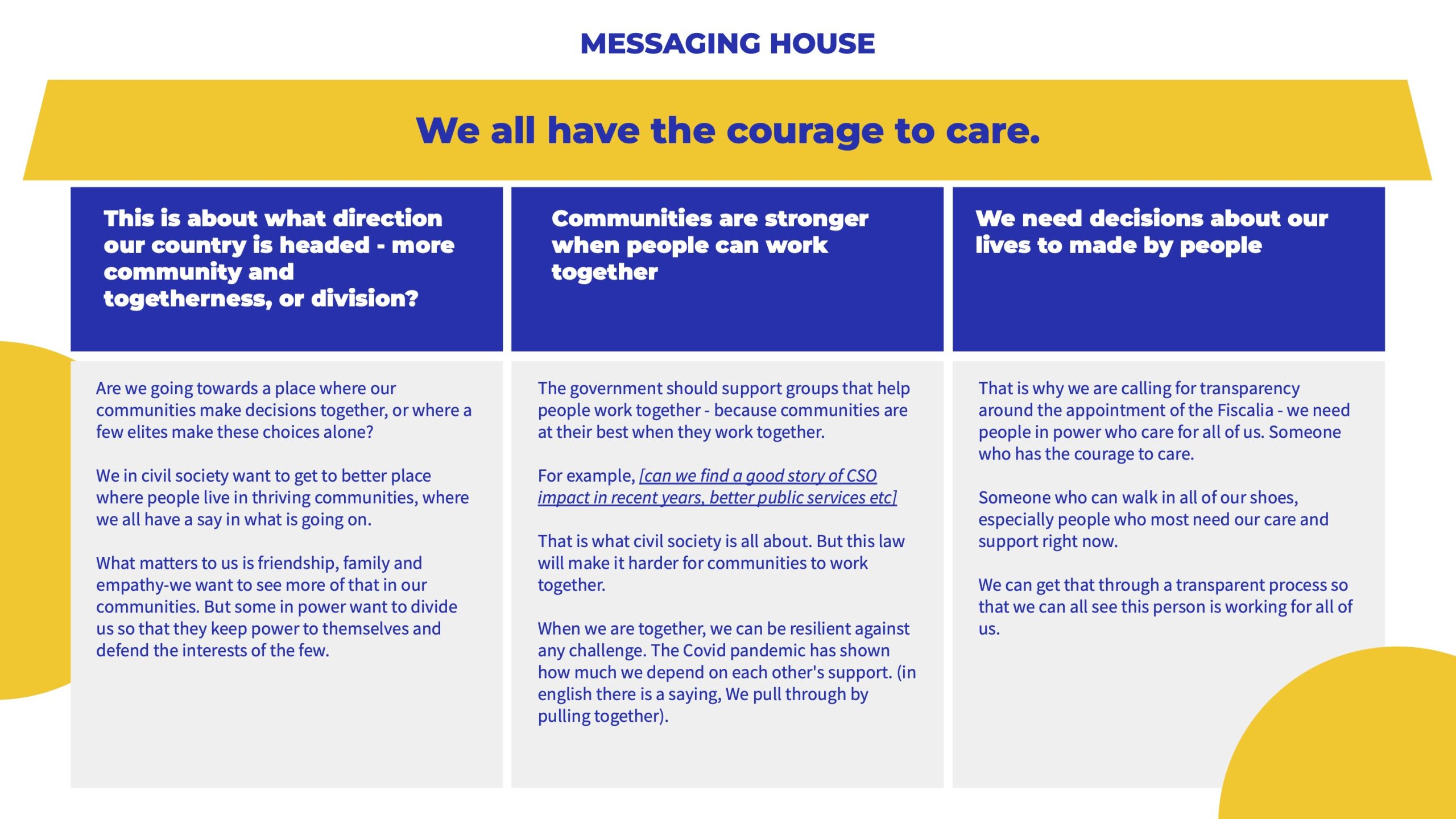We use a messaging house to highlight some simple topline messages that we need to repeat over and over again so that they stick in people’s minds.
-
The roof – our worldview
a simple, big picture phrase that captures our core belief and explains the logic behind the work we do. Three rooms
these are the core values that drive our work. Basic ideas we have about what is important in politics and society.Furniture for each of the three rooms
stories, aphorisms, facts and& figures that illustrate our values.
The messaging house is originally designed to help people give interviews to journalists. When you have a lot to say, it helps to organize your thoughts and structure all the information you have to get across into simple points that people can remember.
The same applies for changing narrative. Surprising facts and compelling stories can grab people’s attention, but we also need to put them in context of a broader story about society. Having a messaging house helps organize our core values that we need to be stronger in society.
How to use it
Simple ideas you repeat over and over
The information we put in the “furniture” box is the new information we have to share —for example, a new report or a protest action— and the “room” box is the language we use to “frame” why what happened today matters and to explain its broader significance.
We can use this language proactively, to frame events that we react to or to make the link to efforts to open more space for civil society, human rights defenders and civic participation: “This is about whether we are all free to participate in society” or “This story shows why attacks on civil society matter.”
You can also test talking about different kinds of issues (such as health care, rule of law and security) to see which ones make people appreciate the role of civil society. We tested different stories of activists working on various issues in society, and in general found that the most effective way to reach people was micro-targeting the message to speak to their specific issues and interests: for example, showing the LGBTQ+ community how civil society created safe spaces for them, or reaching sports fans with stories of sports groups.
Prompt
What do we stand for when we stand for civil society?
Sample answer:
This is about living in a country where we have a strong community.
Prompt
What does it mean to be in civil society? What are we actually doing?
Sample answer:
In civil society, we care for everyone.
Prompt
What can we achieve when civil society is free and strong?
Sample answer:
Civil society is a space for us to realize our dreams.
Explore more tools
This is a simple exercise to start articulating your values message.
Rhetorical and policy attacks on civil society are an effort to shrink civic space by destroying public faith in organizations and public motivation for participation.
Here are some tips for how to work with partners to tell narrative-changing stories.
Use this worksheet to draw the picture you want people to see when they hear your message about “civil society.”
Communications strategy outline once you have a clear goal.
Map out the potential supporters who share your values. You want to mobilize and organize these people to spread your narrative for you.
We use a messaging house to highlight some simple topline messages that we need to repeat over and over again so that they stick in people’s minds.

